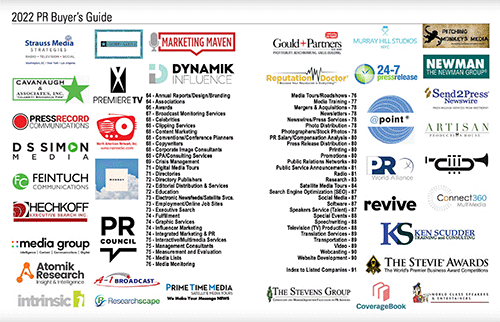 Kevin Foley |
We lost a satellite media tour to a competitor recently because the firm told the client it could guarantee 300 million impressions. Put another way, that means the SMT and related content would be viewed by nearly every man, woman and child in America. By way of comparison, the highest rated TV show right now is NBC’s “America’s Got Talent.” It has 11.6 million viewers.
Most PR pros know there are no “guarantees” when it comes to earned media. Of course, there are paid outlets and we, like many other companies selling broadcast and digital services, utilize them as part of the widely accepted PESO model, so the chances are we go to the same media outlets.
Thus, if I accurately report an audience of 35,000 in Kansas City saw your spokesperson on a morning TV show, I’m using data that supports it. But if the other guy says the same outlet delivered 350,000 viewers, where did that number come from?
Who falls for this? We wonder. What PR professional or corporate communications manager thinks it is even possible to deliver hundreds of millions of impressions for a routine PR story? It might be possible with some earthshaking announcement, but not for a tour featuring a makeup artist flogging eyeliner.
Unfortunately, this isn’t new. Back when I managed accounts at a major PR firm 35 years ago, a video news release company that no longer exists tried to sell me on bogus impressions. I called them out. How dumb did they think I was?
“Well, other PR agency people accept our numbers,” the sales representative told me.
“Yes, and some of them also think the earth is flat,” I replied.
When I launched KEF Media in 1986, I vowed never to mislead PR pros about results. We’d verify them and be as precise as we could. Of course, there were agency and corporate clients who would put our numbers up against the fictitious ones concocted by our competitors and hire the competition… “you lie and I’ll swear to it.”
It seems to me when these phony numbers find their way up the client’s chain of command, it’s quite possible some savvy brand manager is going to call B.S. and the people responsible lose their credibility and maybe even their account or job.
Here are five ways to vet the company you’re considering:
- Before hiring anyone selling broadcast and digital services, ask to see a sample results report, one that mirrors the project you have in mind. For example, if your spokesperson is a doctor or a mommy blogger or the star of some long-ago sitcom, a report on a tour that featured an A-list celebrity isn’t relevant. Compare apples to apples.
- Ask how the firm arrives at the impression numbers they present. Are there really 100,000 viewers watching a low power TV station in Buffalo Breath, Nebraska?
- Find out how the reports are compiled using what data.
- Ask about the firm’s earned media contacts versus pay-to-play outlets.
- If the company offers placement on a show that features paid content, when and where does that show air?
And always remember, if those “guarantees” seem too good to be true, they probably are.
***
Kevin Foley owns KEF Media.



 SaaS platforms now allow businesses to effectively manage and execute their own PR campaigns, putting pressure on agencies to demonstrate the value of the “traditional” PR model.
SaaS platforms now allow businesses to effectively manage and execute their own PR campaigns, putting pressure on agencies to demonstrate the value of the “traditional” PR model. Developing a well-designed TV campaign involves asking three important questions.
Developing a well-designed TV campaign involves asking three important questions. How a "Covid silver lining" can show the way to more effective, cost-efficient video communications.
How a "Covid silver lining" can show the way to more effective, cost-efficient video communications.


 Have a comment? Send it to
Have a comment? Send it to 
No comments have been submitted for this story yet.